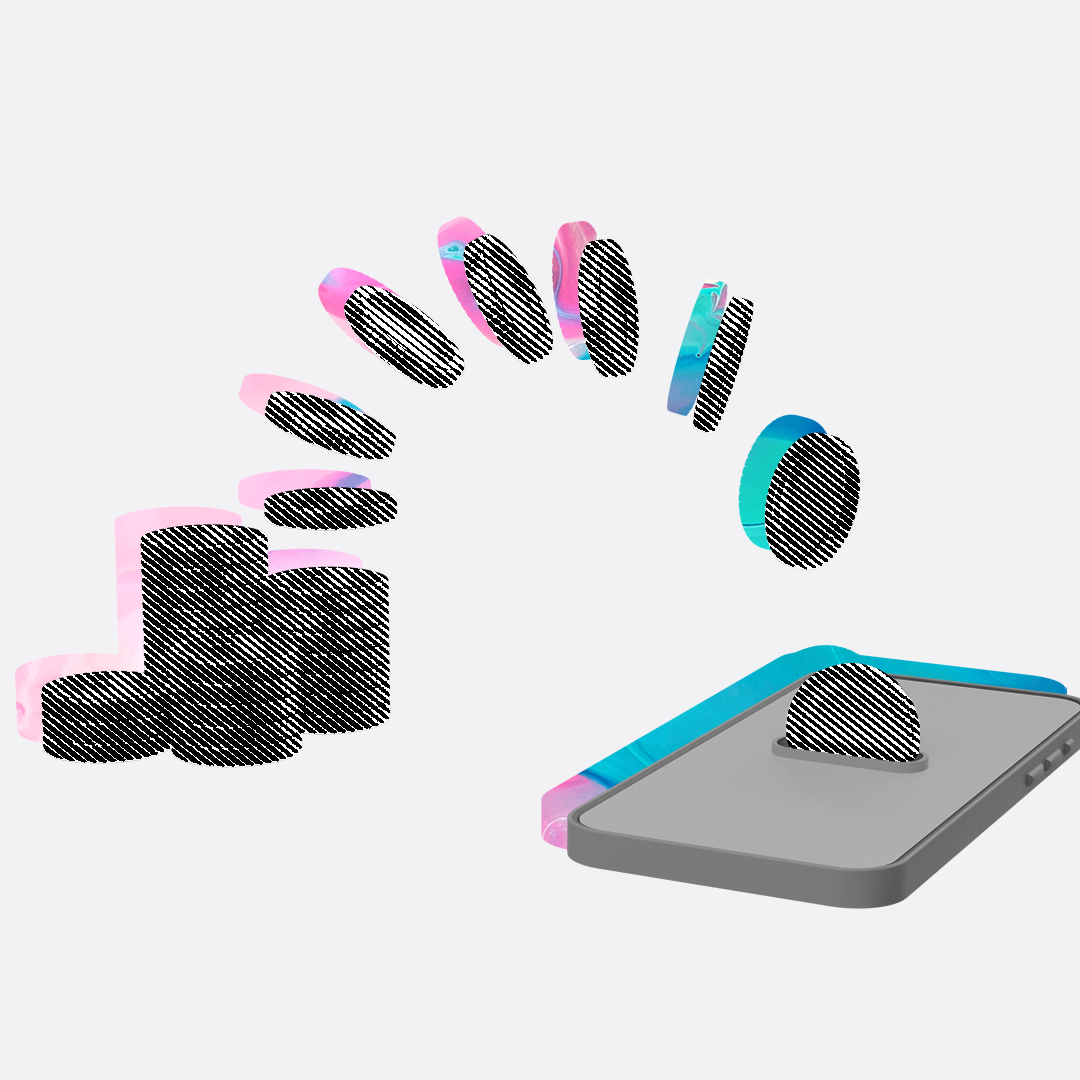When mobile apps first started to emerge, many people didn't understand exactly how developers and companies made money. Now in 2024, everyone is familiar with the term "monetization", but not everyone yet understands exactly how it works and what it takes.
Monetization Models
Monetization is an algorithm that helps developers get paid for having users use their digital product. In order for users to pay for an app, it must be of a high standard, useful and functional, solve their pains or offer something unique. Today, there are 6 main types of application monetization.
Free Application and Adverts in It
This is the simplest and most popular option. The market and target audience are analysed beforehand and the data is provided to advertisers. Then, the advertiser buys advertising integrations in one or another volume.
In this strategy, the most important point is to collect and analyse data. This is important to get the maximum number of leads for the advertising customer. This format is found everywhere, from YouTube to mobile games. At the same time, the app should be free. It is also important considering the number of adverts. If the user sees it after every level or after every open video, he will simply get bored. As a consequence — application removal. It is important to calculate the optimal time for displaying adverts, the adverts themselves and the product to be advertised.
Freemium Application
In simple words — paid subscription. Yes, like YouTube, Discord, mobile games and other services. You give the user a choice: either watch ads and don't pay, or pay and don't watch ads.
To integrate this format, you need a large and loyal audience. These two factors are very important, because not everyone is willing to pay and some may not like it.
In this category of apps, you can include applications with advanced functionality: from games to programmes. For example, there is a VPN service with 200 available servers, but in the free version there are adverts and only 10 main servers are available. The user buys a subscription and gets access to all servers without adverts.
Paid Apps
Just a paid app. Your product has to be very good for a customer to want to buy it. And this is where it all comes down to the "value" of the app. Can you give something that the user is ready to buy? Before deciding on this monetization model, you have to conduct a very precise and detailed market analysis. This will help to identify the level of loyalty, the competitiveness of your product and the willingness to pay for it.
Free Trial
The essence of the model is that a new user gets full access to all the features of the app for a certain period of time: from a week to 30 days, and then he buys a subscription. You will have only 1 chance to show that the app is worth the money.
In-Game Purchases
No, it's not just about gaming, it's just a category we'll call it that. The model has gained popularity because of the mobile gaming sphere. If you have played conditionally free projects, you have seen the systems of "battle pass" or "season pass", the purchase of in-game currency to open new characters or skins. A simple and clear system works like clockwork. The main thing is to create a quality product and regularly maintain it, update it, and stimulate the interest of the audience.
Subscription
Nowadays, the subscription format for services or applications remains one of the most popular and functional. Numerous services offer this format because of its low cost and availability. At the same time, subscriptions can be combined with other formats, such as "Free Trial". For example, YouTube has done just that.
Psychology is also involved here. The company is confident in its product and gives customers a chance to try it without restrictions. Within a month, the client gets used to the "good life" without adverts and wants to buy a subscription. But this works only because the company makes a very favourable offer. It's a similar situation with Netflix, which for a low price offers a huge selection of films/series, as well as exclusive content.
Optimize Monetization With Minimal User Impact
The user is not as simple as it seems. He feels every manipulation and attempt to make him do something against his will. As a consequence — closing the application or deleting it.
Your task is to make the user himself want to buy a subscription or product, pay for the service and so on.
We've already written about YouTube and subscriptions. One of the best examples is where the client after a month of using the software himself wants to buy a subscription to continue to feel as comfortable as possible, without adverts and pauses.
This is an example of an integrated approach from a large company. But how can lesser-known players optimize the coin?
Subscription or in-app advertising is the most common option for app monetization. And here are some tips on how to optimize it.
P.S: Before you start to change something, you need to understand what to change, and whether it is necessary. That's why you should analyse first, then do everything else.
Integration of Programmatic Buying
The essence of the system is that the business moves away from buying advertising space to buying TA. Buying takes place in real time, based on socio-demographic data about users. This improves targeting and the performance of the advert itself.
Native Video Formats
Video ads have done very well for themselves. The key is UX-friendly. It should not be intrusive and obnoxious, so that you want to close it as soon as possible. It should be pleasant and interesting for the user to watch it and even go to the site.
Do not be afraid to move away from the classic banner theme in favour of something more relevant. Perhaps it will bring you even more money.
GEO
Always keep up to date with the current GEOs. They will be different for each type of business. But there are a number of regions that have always been and will always be at the top of the list: the US, India, China and Brazil. Growing and promising markets include Vietnam and a number of Latin American countries.
New Opportunities
Keep up with updates, technology and the market. Try things out and experiment. Don't be lazy to conduct regular research on the market and your metrics. Banally, the portrait of your ideal user will be different from the one you hoped for at the app creation stage, which means you need to adjust to the new audience.
Key Monetization Metrics: Determining Effectiveness
How to understand how good the chosen monetization model of your app is? By revenue? Not quite right. By downloads? Close, but not accurate. There are several important metrics that will clearly show the effectiveness of your strategy.
Average Revenue per Daily Active User
ARPDAU — Average Revenue per Daily Active User. This metric allows you not only to track revenue, but also to evaluate each individual marketing solution. The formula for calculation is as follows:
ARPDAU = Total Revenue / DAU (Daily Active Users)
Distribution by Different Countries
Traffic from every region has its own value. For convenience, traffic from different countries (by value) is divided into Tier 1, Tier 2 and Tier 3 categories.
It is impossible to combine all of them together and calculate the average user revenue. It is calculated separately for each country.
For example, America accounts for 30 to 50% of revenue. The US is Tier 1. If traffic goes down in the US, but grows in Tier 2, revenue will go down. After all, a customer from the US is worth more than a customer from England.
Effectiveness of Advertising
The algorithm of work is similar, but you will start from a separate type of advertising: banners, targeted advertising and so on. And each of the methods you evaluate separately, and then compare each other.
Consider the Application Version
If you need even more details, you can analyse the version of the app the customers are using.
Seasonality
It's no secret that December is one of the most profitable months, while January is somewhere at the bottom of the list. And to compare their indicators with each other will be wrong. It is better not to include them in the process of calculations from pre-holiday and post-holiday influences on the market. Also avoid months when the charts show a jumping trend.
Keep in mind that you need to wait 1 to 2 months while switching to a new ad mediation service. This is to get metrics and data with the new advertising vendors.
Bounce Rate
Bounce rate is a metric that clearly shows the number of users who left a site or application at a certain moment. In our case — during the display of adverts or refusal to buy services. This directly affects the monetization of your application.
Google Analytics helps to determine the degree of refusals or their level. The service shows the lack of user interaction with content and applications on the page. For example, an advert was shown, and the customer closed it/closed the app, and didn't even go to the company's website.
It will also tell you about the effectiveness or ineffectiveness of the advert or offer to customers.
Conclusions
Monetization is one of the possible profit options for developers. Today, there are many options for making money from it. When connecting monetization, the main thing is to choose the best option. It should not only be profitable for your company, but also convenient for users. Before choosing one of the above-mentioned options, you can conduct research on the market, your TA, competitors, and only then choose the right type.




